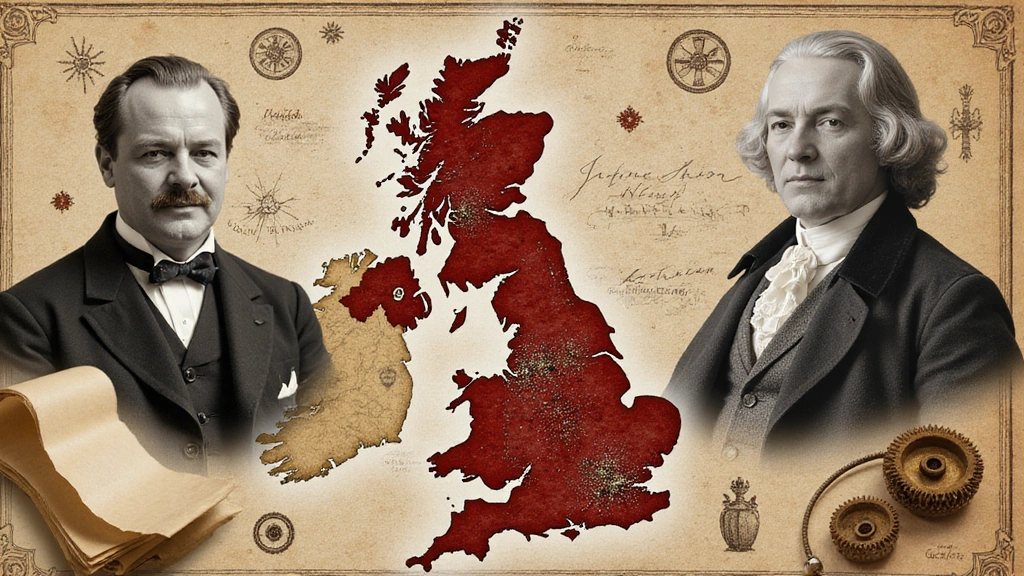Table of Contents
Introduction
Sainsbury’s is one of the UK’s most iconic and enduring retail brands, with a history that spans over 150 years. From its humble beginnings as a small dairy shop in London to its current status as one of the country’s leading supermarket chains, Sainsbury’s has played a pivotal role in shaping the UK’s retail landscape. This article delves into the rich history of Sainsbury’s, its evolution in the UK market, and the lessons it offers for businesses and consumers alike.
The Origins of Sainsbury’s: A Family Legacy
Founding Years (1869–1900)
Sainsbury’s was founded in 1869 by John James Sainsbury and his wife Mary Ann. The couple opened their first store at 173 Drury Lane in London, selling fresh dairy products, eggs, and butter. At a time when food quality and hygiene were major concerns, the Sainsbury’s store stood out for its commitment to quality and cleanliness.
The early success of the store was driven by John James Sainsbury’s innovative approach to retailing. He introduced features like marble counters to keep products cool and glass-fronted displays to showcase the freshness of the goods. These practices helped build trust with customers and set the foundation for the brand’s reputation for quality.
Expansion and Growth (1900–1940)
By the turn of the 20th century, Sainsbury’s had expanded to multiple locations across London. The company adopted a self-service model, which was revolutionary at the time, allowing customers to browse and select products themselves. This approach not only improved efficiency but also enhanced the shopping experience.
During this period, Sainsbury’s also began to diversify its product range, introducing items like tea, coffee, and canned goods. The company’s focus on quality and affordability made it a favorite among working-class families, and its stores became a staple of British high streets.
Post-War Era: Modernization and Innovation
The Supermarket Revolution (1940–1970)
The post-war period marked a significant shift in the retail industry, and Sainsbury’s was at the forefront of this transformation. In 1950, the company opened its first self-service supermarket in Croydon, South London. This marked the beginning of the modern supermarket era in the UK.
Sainsbury’s embraced new technologies and innovations, such as refrigerated display cases and electronic tills, to improve efficiency and customer service. The company also expanded its product range to include frozen foods, household items, and fresh produce, catering to the changing needs of post-war consumers.
National Expansion and Brand Building (1970–1990)
The 1970s and 1980s were a period of rapid growth for Sainsbury’s. The company expanded beyond London, opening stores across the UK and becoming a national brand. It also introduced its own-label products, which offered high quality at competitive prices, further strengthening its reputation for value.
During this time, Sainsbury’s became known for its innovative marketing campaigns, including the famous “Good Food Costs Less at Sainsbury’s” slogan. The company also invested in staff training and development, ensuring a high standard of customer service.
By the 1980s, Sainsbury’s had become the UK’s largest supermarket chain, a position it held for much of the decade. Its success was driven by a combination of quality products, competitive pricing, and a focus on customer satisfaction.
Challenges and Transformation (1990–2010)
Rising Competition
The 1990s brought new challenges for Sainsbury’s as competitors like Tesco and Asda began to gain market share. These rivals adopted aggressive pricing strategies and expanded their store networks, putting pressure on Sainsbury’s to adapt.
Leadership Changes and Strategic Shifts
In response to these challenges, Sainsbury’s underwent a series of strategic shifts. The company invested heavily in store refurbishments, introduced loyalty programs like the Nectar card, and expanded its online shopping capabilities.
However, these efforts were not enough to regain its leading position, and Sainsbury’s faced several years of declining market share. The appointment of Justin King as CEO in 2004 marked a turning point. King launched the “Making Sainsbury’s Great Again” initiative, which focused on improving product quality, customer service, and store layouts. This strategy helped Sainsbury’s regain its footing and rebuild customer loyalty.
Sainsbury’s in the Modern Era (2010–Present)
Diversification and Acquisitions
In recent years, Sainsbury’s has pursued a strategy of diversification to strengthen its position in the competitive retail market. Key milestones include:
- Acquisition of Argos (2016): Sainsbury’s purchased Home Retail Group, the parent company of Argos, to expand its non-food offerings and enhance its multichannel capabilities.
- Merger with Asda (Proposed 2018): Sainsbury’s attempted to merge with Asda to create the UK’s largest supermarket chain. However, the deal was blocked by regulators over concerns about reduced competition.
Focus on Sustainability and Innovation
Sainsbury’s has also prioritized sustainability and innovation in its operations. The company has committed to reducing plastic packaging, sourcing sustainable products, and achieving net-zero carbon emissions by 2035. It has also invested in technology, such as smart checkout systems and AI-driven supply chain management, to improve efficiency and customer experience.
Response to the COVID-19 Pandemic
The COVID-19 pandemic presented unprecedented challenges for the retail industry, and Sainsbury’s responded by ramping up its online delivery services, implementing safety measures in stores, and supporting vulnerable customers. These efforts helped the company maintain its reputation as a trusted and reliable retailer during a difficult time.
Lessons from Sainsbury’s Journey
Sainsbury’s history offers valuable lessons for businesses and consumers:
1. Adaptability is Key
Sainsbury’s ability to adapt to changing market conditions and consumer preferences has been crucial to its longevity. Whether it’s embracing new technologies or diversifying its offerings, the company has shown a willingness to evolve.
2. Quality and Trust Matter
Sainsbury’s commitment to quality and customer trust has been a cornerstone of its success. By consistently delivering high-quality products and excellent service, the company has built a loyal customer base.
3. Innovation Drives Growth
From self-service supermarkets to online shopping, Sainsbury’s has been a pioneer in retail innovation. Staying ahead of industry trends has allowed the company to remain competitive.
4. Sustainability is a Business Imperative
Sainsbury’s focus on sustainability reflects the growing importance of environmental and social responsibility in business. Companies that prioritize sustainability are better positioned to meet the expectations of modern consumers.
5. Resilience in the Face of Challenges
Sainsbury’s journey has not been without setbacks, but the company’s resilience and ability to bounce back have been key to its success.
Conclusion: Sainsbury’s Enduring Legacy
Sainsbury’s is more than just a supermarket chain; it is a symbol of British retail history and innovation. From its humble beginnings as a small dairy shop to its current status as a retail powerhouse, Sainsbury’s has consistently demonstrated a commitment to quality, customer service, and adaptability.
As the retail industry continues to evolve, Sainsbury’s remains a trusted and beloved brand, offering valuable lessons for businesses and consumers alike. Whether you’re a history enthusiast, a business leader, or a loyal Sainsbury’s shopper, the story of this iconic brand is a testament to the power of vision, resilience, and innovation.
THE VARIED RICH HISTORY OF BARNET
Introduction
Banking, as we know it today, is a cornerstone of modern economies, facilitating trade, investment, and economic growth. However, the concept of banking is not a modern invention. Its roots can be traced back thousands of years, evolving through various civilizations and economic systems. This article delves into the rich history of banking, exploring its origins, key developments, and transformation into the complex financial systems we rely on today.
Ancient Beginnings: The Birth of Banking
Mesopotamia and the First Financial Transactions
The history of banking begins in ancient Mesopotamia, around 2000 BCE. The region, often referred to as the “Cradle of Civilization,” was home to the Sumerians, who developed one of the earliest known systems of writing, cuneiform. This innovation allowed for the recording of financial transactions, which were primarily related to agriculture.
Temples in Mesopotamia served as the first banks. They stored grain and other commodities, which were used as a form of currency. Priests acted as financial intermediaries, lending these stored goods to farmers and traders. The concept of interest also emerged during this period, with lenders charging a fee for the use of their resources.
Ancient Egypt: The Role of Grain Banks
In ancient Egypt, around 3000 BCE, grain banks played a crucial role in the economy. These banks stored surplus grain, which was used to pay workers and fund public projects. The Pharaohs, who were considered divine rulers, controlled these banks, ensuring the stability of the economy.
The grain banks also facilitated trade, as they allowed for the exchange of goods without the need for physical currency. This system laid the groundwork for the development of more sophisticated financial instruments, such as promissory notes and bills of exchange.
Ancient Greece and Rome: The Emergence of Private Banking
The ancient Greeks and Romans further advanced the concept of banking. In Greece, around 600 BCE, private individuals began to offer financial services, such as money lending and currency exchange. These early bankers, known as “trapezites,” operated from tables (trapeza) in marketplaces, where they conducted their transactions.
The Romans, who inherited much of their financial knowledge from the Greeks, established a more formalized banking system. They introduced the concept of credit, allowing individuals to borrow money against collateral. Roman banks also issued letters of credit, which facilitated trade across the vast Roman Empire.
The Middle Ages: Banking in Europe
The Rise of Medieval Banking
The fall of the Roman Empire in 476 CE led to a period of economic decline in Europe. However, by the 12th century, banking began to re-emerge, driven by the growth of trade and commerce. Italian city-states, such as Florence, Venice, and Genoa, became centers of financial activity.
Medieval banks were primarily involved in money changing and lending. They also played a crucial role in facilitating international trade, as they provided letters of credit and bills of exchange. These instruments allowed merchants to conduct business across long distances without the need to carry large amounts of cash.
The Medici Bank: A Pioneer in Modern Banking
The Medici family, one of the most powerful and influential families in Renaissance Italy, established the Medici Bank in 1397. The bank became a model for modern banking, offering a wide range of financial services, including deposit banking, money lending, and foreign exchange.
The Medici Bank also introduced the concept of double-entry bookkeeping, which revolutionized financial record-keeping. This innovation allowed for more accurate tracking of financial transactions and laid the foundation for modern accounting practices.
The Role of the Knights Templar
The Knights Templar, a medieval Christian military order, also played a significant role in the development of banking. They established a network of banks across Europe, which provided financial services to pilgrims traveling to the Holy Land. The Templars issued letters of credit, allowing pilgrims to deposit money in one location and withdraw it in another.
The Templars’ banking system was highly sophisticated for its time, and their financial expertise made them one of the wealthiest and most powerful organizations in medieval Europe. However, their influence declined after the order was disbanded in the early 14th century.
The Renaissance and the Birth of Modern Banking
The Rise of Public Banks
The Renaissance period saw the establishment of public banks, which were owned and operated by governments. The first public bank, the Bank of Saint George, was founded in Genoa in 1407. It was followed by the Banco di San Giorgio in Venice in 1587 and the Bank of Amsterdam in 1609.
Public banks played a crucial role in stabilizing economies and facilitating trade. They issued standardized currency, provided loans to governments, and acted as lenders of last resort during financial crises. These banks laid the groundwork for the modern central banking system.
The Birth of Central Banking
The concept of central banking emerged in the 17th century, with the establishment of the Bank of Sweden (Sveriges Riksbank) in 1668 and the Bank of England in 1694. These banks were created to manage government finances, regulate the money supply, and stabilize the economy.
The Bank of England, in particular, became a model for central banks around the world. It issued banknotes, which were backed by gold reserves, and acted as a lender of last resort during financial crises. The bank’s ability to control the money supply and influence interest rates made it a powerful tool for economic management.
The Industrial Revolution and the Expansion of Banking
The Growth of Commercial Banking
The Industrial Revolution, which began in the late 18th century, brought about significant changes in the banking industry. The rapid growth of industry and trade created a demand for more sophisticated financial services, leading to the expansion of commercial banking.
Commercial banks, which were primarily focused on serving businesses, offered a wide range of services, including deposit banking, loans, and credit. They also played a crucial role in financing industrial projects, such as the construction of railways and factories.





